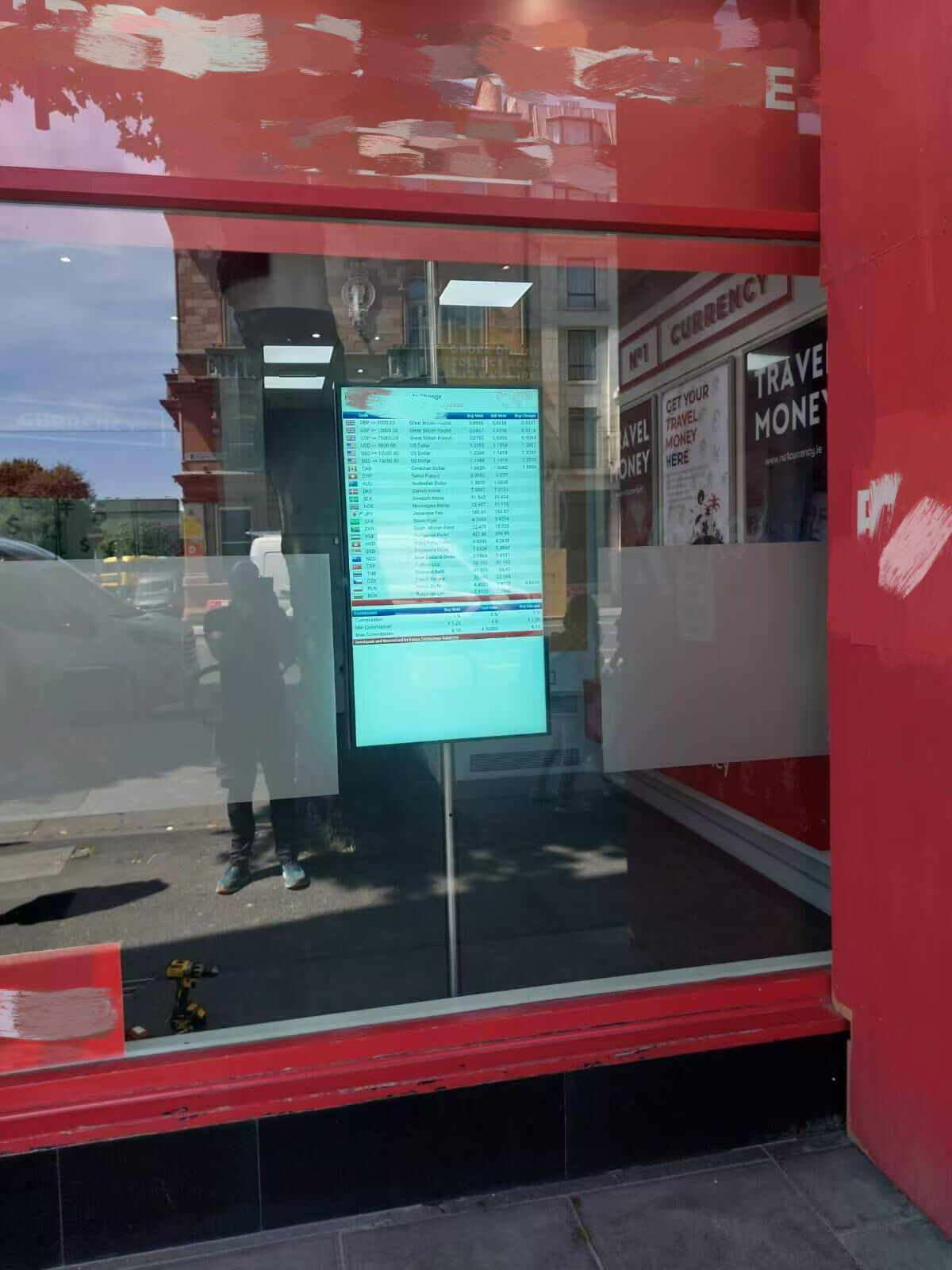
In today’s competitive retail landscape, grabbing and holding customer attention is more challenging than ever. Storefronts are constantly evolving to be more than just a place to hang signs or display mannequins. With technology now at the forefront of visual merchandising, the adoption of high brightness digital window displays has become a popular trend among forward-thinking brands. These digital solutions do more than enhance aesthetics — they serve as powerful tools for engagement, brand communication, and customer conversion.
One of the primary advantages of high brightness digital window displays is their ability to cut through intense sunlight and reflections. Traditional signage and standard digital screens often suffer from poor visibility in bright environments, particularly when facing windows or outdoor spaces. High brightness digital window displays, with luminance levels reaching 2500 to 4000 nits or more, maintain clarity and readability even under direct sunlight. This ensures that marketing messages remain legible and impactful throughout the day.
Visual consistency is critical in retail branding. High brightness digital window displays ensure that vibrant colors, high contrast, and clear motion graphics are maintained regardless of the ambient lighting conditions. Unlike static signage that can appear dull or washed out, these displays bring content to life, offering an immersive visual experience that draws consumers in from the sidewalk or the street.
Static signs are limited in what they can communicate — often constrained to one message until manually changed. High brightness digital window displays enable real-time updates and dynamic content rotation. Retailers can display promotions, product features, social media feeds, and even customer reviews on a rotating schedule. This flexibility allows stores to keep messaging fresh and responsive to inventory, seasonal campaigns, and current trends.
Many high brightness digital window displays can be integrated with sensors or touch-based technologies. This opens the door for interactive campaigns, such as QR code scanning, touch-based browsing, or augmented reality experiences. As customers become more tech-savvy, such interactive touchpoints elevate the brand perception and create deeper, more memorable interactions.
With high brightness digital window displays, businesses can cut down on recurring printing and installation costs for traditional posters or vinyl banners. Digital content can be changed remotely and scheduled in advance, reducing the need for on-site labor. Over time, these savings add up and contribute to a more sustainable, environmentally-friendly approach to retail marketing.
Digital window displays are often connected to content management systems (CMS), allowing businesses to control what is displayed across multiple locations. This is especially useful for chain stores that require consistent branding and promotion management. With centralized CMS, retailers can update pricing, promotions, or branding elements instantly without delay or inconsistency.

Consumers associate digital window displays with modernity and innovation. The sleek appearance of high brightness digital window displays conveys professionalism and attention to detail. Passersby are more likely to notice stores that appear current and engaging, which helps build positive brand perception and increases foot traffic.
Displaying high-resolution images and videos of products can influence buying behavior significantly. When customers can clearly see product features, colors, and applications, they are more inclined to walk in and explore. High brightness digital window displays enable retailers to tell visual stories about their products in a way that traditional posters cannot.
Retail is fast-paced. Promotions, trends, and consumer behaviors shift rapidly. High brightness digital window displays offer agility — allowing stores to adapt messaging on the fly. Whether responding to competitor actions, launching a flash sale, or highlighting trending products, retailers gain a competitive edge by acting quickly with relevant content.
Digital signage allows for the inclusion of multiple languages and culturally sensitive content, making it easier for stores to reach diverse audiences. This inclusivity not only broadens customer appeal but also reinforces a brand’s commitment to accessibility and respect for local communities.
Studies show that digital signage can influence in-store purchase decisions. High brightness digital window displays grab attention where it matters most — at the window, where impressions convert to foot traffic. By displaying targeted promotions or product bundles, businesses can effectively increase average transaction value.
Many consumers make unplanned purchases based on visual appeal or perceived urgency. A well-placed and vibrant digital message can prompt instant decisions. High brightness digital window displays are uniquely positioned to reach impulse buyers by capturing their interest before they even step inside.
As retailers invest in omnichannel experiences, integrating in-store and online channels becomes essential. High brightness digital window displays serve as a bridge, guiding customers from physical to digital platforms. By displaying web addresses, app promotions, or QR codes, stores can channel in-store visitors to online ecosystems seamlessly.
Modern digital displays can also support data-gathering tools that track foot traffic, engagement time, and interaction rates. This data can inform future marketing campaigns and layout decisions. High brightness digital window displays are part of a smart retail ecosystem that goes beyond just visuals.
A brightness level of at least 2500 to 3000 nits is recommended for direct sunlight environments to ensure clear visibility.
Yes, but many modern displays come with power-saving features like automatic brightness adjustment based on ambient light.
Absolutely. These displays automatically dim in low-light conditions to avoid glare or light pollution, making them effective day or night.
With proper maintenance, most commercial-grade displays last between 5 to 7 years, depending on usage and environmental conditions.

Copyright © 2025 Shenzhen YJCen Technology CO.,Ltd. All rights reserved. - Privacy policy